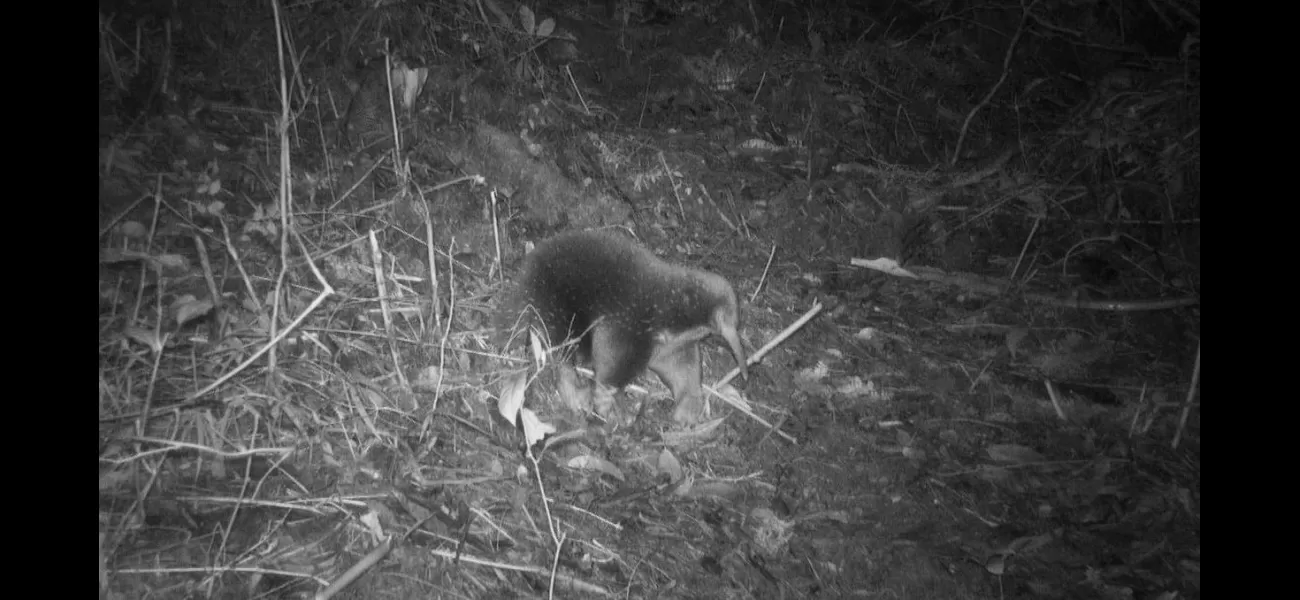A strange animal has been discovered after 60 years, named in honor of David Attenborough.
Life is full of surprises and unexpected events.
November 10th 2023.

After more than sixty years of searching, scientists have finally captured the Attenborough’s long-beaked echidna on camera. This strange creature, described as having the spines of a hedgehog, the snout of an anteater, and the feet of a mole, was named after Sir David Attenborough and was found in Indonesia’s Cyclops Mountains.
The biologist of the expedition, James Kempton, was ecstatic to find the small creature walking through the forest undergrowth on the last memory card retrieved from over eighty remote cameras. He shouted out to his colleagues that they had found it and ran in to the living room to hug the guys.
The Attenborough’s long-beaked echidna is one of just five surviving species of monotreme, which are egg-laying mammals, and one of only three other species of echidna. It is a member of the monotremes, a group that separated from the rest of the mammal tree-of-life about two hundred million years ago.
The echidna is embedded in the local culture, and is seen as so difficult to find that it could take decades or a generation to locate it. However, once it is found, it is seen as the symbol of the end of any conflict and the return to harmonious relationships.
The echidna was spotted on the last day of the expedition, which was a remarkable feat considering the team had to survive an earthquake, malaria, and a leech attached to an eyeball during their trip. It is now part of the conservation charity Re:Wild’s ‘Most Wanted’ list, part of its Search for Lost Species programme.
The Attenborough’s long-beaked echidna is indeed a strange creature, but it is a remarkable achievement for the scientists to have been able to capture it on camera. Let’s hope this unique species can be preserved for many generations to come.
The biologist of the expedition, James Kempton, was ecstatic to find the small creature walking through the forest undergrowth on the last memory card retrieved from over eighty remote cameras. He shouted out to his colleagues that they had found it and ran in to the living room to hug the guys.
The Attenborough’s long-beaked echidna is one of just five surviving species of monotreme, which are egg-laying mammals, and one of only three other species of echidna. It is a member of the monotremes, a group that separated from the rest of the mammal tree-of-life about two hundred million years ago.
The echidna is embedded in the local culture, and is seen as so difficult to find that it could take decades or a generation to locate it. However, once it is found, it is seen as the symbol of the end of any conflict and the return to harmonious relationships.
The echidna was spotted on the last day of the expedition, which was a remarkable feat considering the team had to survive an earthquake, malaria, and a leech attached to an eyeball during their trip. It is now part of the conservation charity Re:Wild’s ‘Most Wanted’ list, part of its Search for Lost Species programme.
The Attenborough’s long-beaked echidna is indeed a strange creature, but it is a remarkable achievement for the scientists to have been able to capture it on camera. Let’s hope this unique species can be preserved for many generations to come.
[This article has been trending online recently and has been generated with AI. Your feed is customized.]
[Generative AI is experimental.]
0
0
Submit Comment





